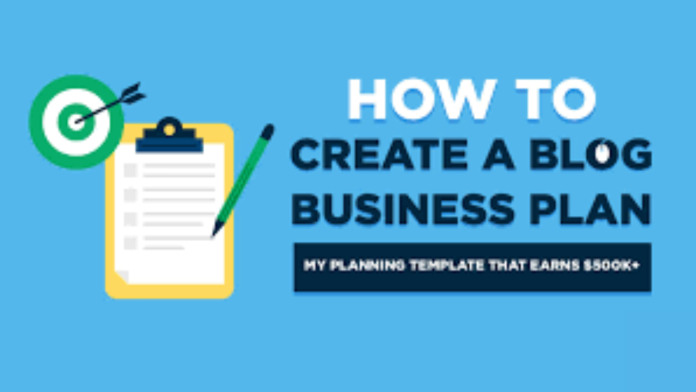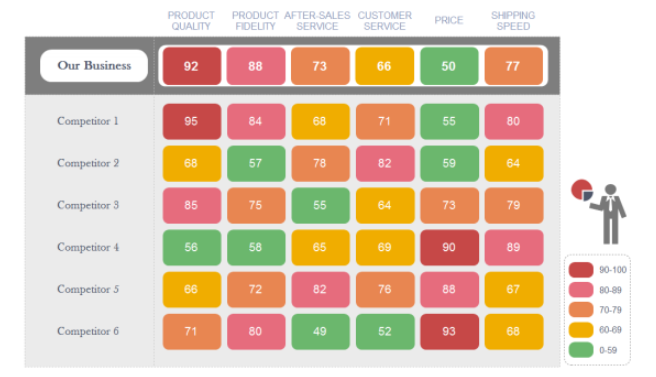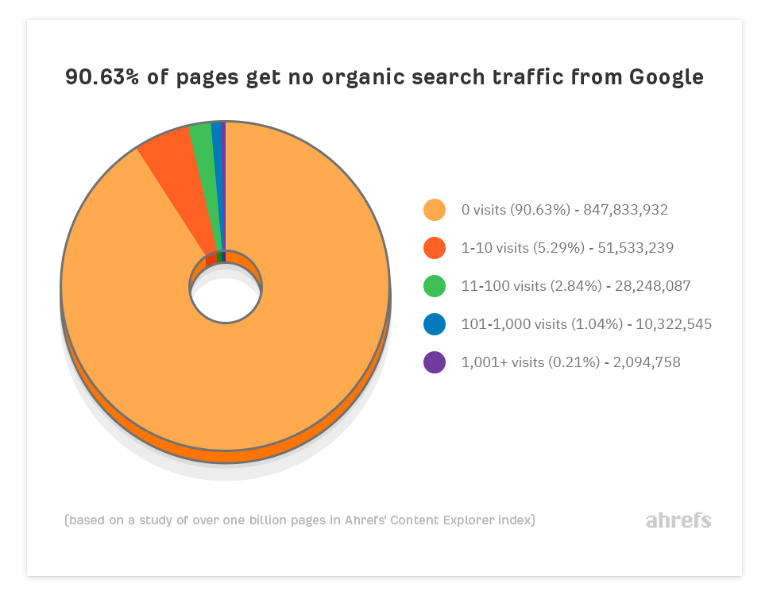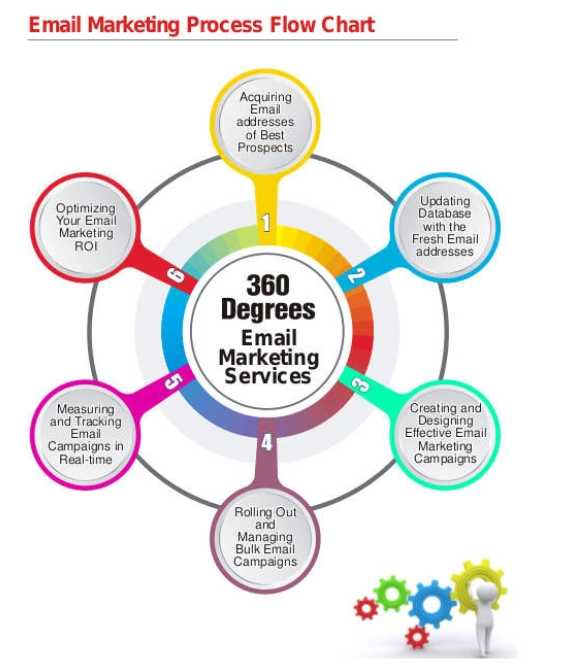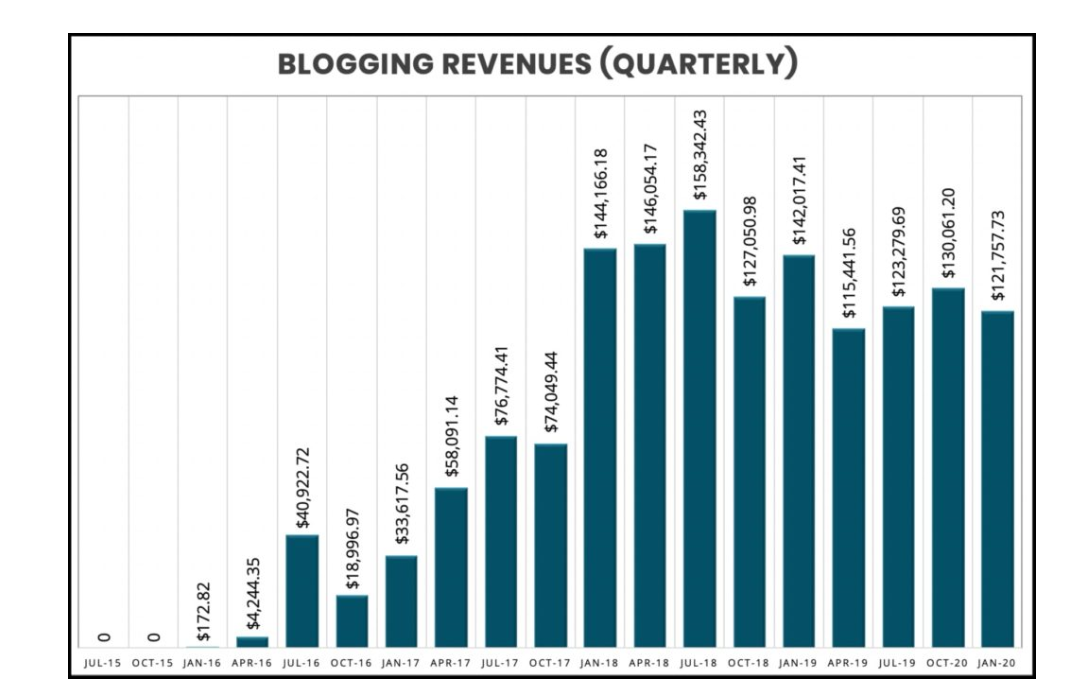Are you ready to turn your blog into a thriving business? If you’re serious about monetizing your blog and taking it to the next level, you need a solid business plan. A well-crafted blog business plan will help you clarify your goals, identify your target audience, and map out a clear path to success.
But where do you even begin? Creating a business plan from scratch can be a daunting task, especially if you’re new to the world of entrepreneurship. That’s why we’ve put together this step-by-step guide to help you through the process.
In this guide, we’ll walk you through everything you need to know to create a comprehensive blog business plan, from defining your niche and analyzing your competition to setting realistic financial goals and creating a marketing strategy. And to make things even easier, we’ve included a template that you can use to organize your thoughts and ideas.
Whether you’re a seasoned blogger looking to take your business to the next level or a beginner just starting out, this guide will provide you with the tools and knowledge you need to succeed. So let’s get started and turn your blog into a profitable business.
10 Essential Sections in a Blog Business Plan
While there are 10 major sections in your business plan, each section of your plan is not necessarily self-contained. This means you can’t expect to finish step one and then move on to step two and proceed to each next area—you may go back and forth between sections when creating your plan. This holds especially true for the Executive Summary, which includes summarized content found in other sections of the plan.
1. Create an Executive Summary
The Executive Summary is widely considered the most important section of a business plan. This one section boils down your business plan to the essentials of how you intend to create and operate a profitable business. As a blogger, the main reason to create an Executive Summary is so that you are clear and remain focused on what you want to accomplish.
Your Executive Summary should list your blog’s name, a brief blog description, as well as summarized information about your blog’s target market and ideal audience. You will also want to include your blog’s mission statement and top business goals in this section of your plan.
Enter Your Blog’s Name on Your Plan
Your blog’s name may or may not be the same as your business name. For example, the popular lifestyle and personal finance blog Living Well Spending Less® is owned by Ruth Soukup Omnmedia. Soukup has several businesses and brands and gathers them all under one company name. If your blog’s name and your business name are not identical, that should be noted in this section of your plan.
Deciding on your blog’s name somewhat mirrors the steps you take to come up with a business name. Here are a few things to keep in mind when creating your blog name:
- Look for names that aren’t already taken
- Decide the tone you want your name to convey such as serious, playful, formal, or informal
- Select a name that is easy to remember and spell
- When possible, use a blog name that you can also use as your domain name
Here are some simple name-generating tactics that might inspire you:
- Incorporate the blog audience in your blog name.
- Find naming inspiration from characters in books or mythology
- Incorporate a location name into your blog’s name, if appropriate.
- Consider using a portmanteau, which is just two names modified and smushed to become one name (e.g., breakfast + lunch = brunch).
You may find that naming your blog presents a little more challenge than you anticipated. Let’s face it, with more than 31 active million bloggers in the world, a lot of terrific names are already taken. Finding the perfect blog name and domain will take time and creativity on your part, but the tips listed above will make the process easier.
Write a Blog Overview
An overview is a 40,000-foot fly-over description of what your blog is about and why it exists. Write this from the perspective of a business owner who intends to monetize a blog.
If you’re starting a blog as a hobby or passion project, you don’t need a business plan because your goal is not to make money. Your secondary reasons for starting a blog might be because you’re passionate about the blog’s subject, but your ultimate goal is to turn a profit. I really can’t overemphasize the need to view your blog as a business.
Try to keep this section of your blog plan to 250 to 500 words. Remember, it’s a summary, not a dissertation. The primary advantage of creating a relatively brief blog description is that you can refer to it as you build your blogging businesses. When you stay focused on why your blog exists, and make decisions based on that why, you’ll avoid many bumps in the road that throw less business-focused bloggers off course.
Add a Short Description of Your Target Market & Ideal Audience
While it’s wise to include an overview of your target market and audience in your Executive Summary, it’s not something you can do before conducting in-depth research. This is what I meant by creating a business plan is not a straightforward step-by-step path; sometimes you have to skip a few steps and then come back to complete those you skipped.
When creating section two of your blog business plan-—the Market & Competitor Analysis section-—you’ll conduct in-depth research and provide considerably more detail about your target market and audience. That detailed information will help you create the abbreviated content you add to this section of your Executive Summary.
Write Your Mission Statement
A mission statement is a short declaration of what you do and who you do it for, as well as how your blog is unique. The purpose of a mission statement is to keep all those who work on your blog focused on your business goals and ideals.
When writing your mission statement, be sure to answer these questions:
- Who does the blog serve?
- What will the blog do for them; i.e., what’s its purpose?
- How will the blog accomplish this? (This is where being unique will set you apart from competitors. )
A strong mission statement is clear and compelling. The best mission statements are simple, jargon-free, and straightforward. Moreover, they’re inspiring. Your mission statement should inspire you, and those who work on your blog with you.
Blog Mission Statement Template
Our mission at [blog name]____________________________________
is [what you do]_____________________________________________
for [who you do it for] ________________________________________
that [what you accomplish] ____________________________________
Example of a Mission Statement for a Fictional Travel Blog
Our mission at Travel Morocco Now
is to provide incredible experiences
for travel enthusiasts worldwide
that offers an authentic glimpse at all these exotic land offers.
List Top Goals That Are Key to Your Blog’s Success
Once again, you may need to refer to other sections in the plan before entering this information on your Executive Summary. For example, you may want to set goals around the types of monetization strategies you plan to pursue (which is discussed in-depth in your Blog Monetization Plan) or set goals for your promotional investments (which you outline in the Blog Marketing & Promotion section).
Include around four to seven goals in your top goals list. If you’re not certain how to set business goals, check out this list of 10 SMART goal examples. Goals can include anything from selling 1,000 e-books in the first six months at $19 each to achieving 30,000 average monthly page views so you can join a high-paying advertising network like MediaVine.
2. Market & Competitor Analysis
Many bloggers do at least some niche market research before deciding to start a blog business. If you’ve already done that, congratulations—you’re ahead of the curve. If you haven’t started yet, don’t worry, as you can still commence your in-depth study of your blog’s niche market as well as the top competitors in your blog’s area of expertise.
Write Your Niche Market Analysis
When starting a blog with the aim of making money, it’s best to focus on a niche rather than a broad market. Frankly, it’s simply too hard for a solo blogger to gain traction for a blog that tries to cover too many subjects (the exception being lifestyle blogs, which typically cover more areas but from one person’s point of view).
You can always broaden or narrow your blog’s focus once it’s been up and running for a while. Before you do that though, it’s best to look at blog performance data to see if a change in content scope is appropriate.
To create this section of your plan, you’ll need to conduct thorough market research. Once you have a good handle on your niche, it’s time to summarize your findings in the Market Analysis section of your blog business plan.
Here are key questions to address in your plan:
- What topics are potential customers searching for on Google?
- How big is the market and is there any evidence it’s growing or shrinking?
- Who is your ideal customer and what are they like?
- Are there any uncontrollable market factors that could threaten or increase your odds of success?
Your business plan isn’t a static document. Market conditions and demand change over time, hence you’ll need to revisit your blogging plan periodically to make sure you stay up with an ever-changing environment. This is especially true when it comes to your blog’s market and competitor analyses.
Develop a Thorough Competitor Analysis
Getting a good handle on who your blog competitors are is absolutely critical to your success—like “you won’t stand a chance of success if you don’t get this right” critical. A thorough competitor analysis is likely to reveal many opportunities you wouldn’t find elsewhere.
Here are crucial questions to address in this section of your plan:
- Who are my blog’s primary competitors?
- How are those competitors making money with their blogs?
- What topics are my competitors covering on their blogs?
- What are they doing well?
- What are they not doing so well?
- What are the “holes” in their strategies (in other words, opportunities to solve problems competitors aren’t addressing)?
- How big is their follower base on various social media channels?
- How much traffic does each competitor get? (Tip: use Alexa to get this information.)
When visiting competitors’ blogs, make sure you spend some time taking in the full experience. Pay attention to site design, overall vibe, use of visuals and videos, and other site features that make a favorable—as well as unfavorable—impression on you. Sometimes it’s those subtle details that add up to make a blog stand apart from the crowd.
3. Brand Identity Overview
The amount of detail you include in this section of your blog business plan will vary based on where you are in your blog development process. If you’re still in the conceptualization stage of your blog, you may not have your entire brand identity worked out yet.
At a minimum, include the following information in your Brand Identity Overview:
- A description of your brand’s personality—for example serious, casual, warm, or cutting-edge.
- What do you want people to think of when they describe your blog’s brand?
- How you’ll reflect your blog’s core values and mission in your brand identity.
If possible, also include:
- Your logo and all brand marks
- Specific typography used in your brand
- Brand colors
- Brand taglines
- Iconography and other key graphics
Remember, your plan is not something you create and forget. If you don’t have all your brand identity components available to post in your plan now, go back and add them later.
4. Blog Content Overview
Your blog needs an overall business plan, but it also needs a blog content strategy plan. In the Blog Content Overview, you’ll add a summary of your content strategy, discussing not only the types of content that will be created but also how you intend to keep that quality high.
Here are the basics to add to your Blog Content Overview:
- Core blog categories: List the main topic categories that will be covered on your blog. For new blogs, three to five categories are recommended. You may also want to include the first 10 blog posts that you’ll create under each of these categories.
- Types of blog formats planned: Most blogs use a variety of blog formats, including how-to posts, interviews, reviews, case studies, guides, opinion posts, and behind-the-scenes posts.
- How you’ll create 10X content: You want to wow your reader so here’s your chance to explain how you’ll develop content that’s ten times better than anything else available.
- How you plan to establish your expertise, authority, and trust (EAT): Your blog posts will only appear in Google’s top search results if Google feels it meets its quality expectations.
- Posting frequency: Create a plan for how frequently you’ll post based on available time and resources.
Two of the biggest mistakes new bloggers make are to create content inconsistently and develop blog posts that are irrelevant to the blog audience. Consistency helps you build your following while developing your brand’s authority. Creating content focused exclusively on the needs of your niche provides a trustworthy experience for your audience as well as shows Google that you have deep expertise in your niche.
5. Blog Monetization Plan
If you want to turn your blog into a profitable business, you need a sound plan for making money. There are many ways to monetize a blog, though some produce better results than others.
Affiliate marketing and selling digital products and services top the list of best ways to make money blogging. You can get started with affiliate marketing from day one on your blog.
Digital products, such as e-books and online courses, may take longer to create, but the upside is that you get to keep all the profits. Seven-figure bloggers, including Michelle Schroeder-Gardner, Pat Flynn, and Brian Clark, all made the bulk of their fortunes through self-produced products and courses.
Other monetization techniques include:
- Selling ads directly or joining ad networks
- Sponsored posts
- Private memberships
- Events and Retreats
- Exclusive forums
- Physical products
- Digital downloads (e.g., checklists, templates, and planners)
- Apps
- Offering coaching, consulting, or freelancing services
Some monetization strategies just aren’t practical for new blogs. For example, you won’t make any money through advertising when your blog has very little traffic coming to it. That’s why many bloggers list two different monetization strategies in their business plans. The first is a startup monetization plan. The second is a “next-step” monetization plan, which commences when blog traffic picks up.
In the Blog Monetization section of your plan, be sure to include specific tactics you plan to pursue. Set goals regarding when you’ll start each tactic as well as how much money you hope to generate from each method.
6. Blog Marketing & Promotion Strategies
You can create the best blog on the planet, but your results will be abysmal if no one knows you exist. Developing an effective blog marketing and promotion strategy is yet another key to your ultimate success.
While there are many ways to promote your blog, you want to focus on those that make the biggest difference, which includes a strong launch strategy, social media marketing, search engine optimization, and email marketing. If your budget allows, you may also want to consider paid advertising.
Launch Strategy
What’s your plan for getting the word out about your blog when it’s brand-new? It’s wise to create a blog launch strategy much like you would develop a product launch strategy.
Types of marketing and promotional activities to pursue in the launch phase of your blog include:
- Tell your network about your new blog and ask them to share it with their networks
- Appear as a guest on popular podcasts
- Guest blog on other blogs (where you’ll get exposure for your blog)
- Create highly targeted, paid social media channels ads or Google ads
- Reach out to influencers in your niche
The toughest phase of any new blog is the launch period. You may find that it’s difficult to get traction at first, but be persistent in your efforts to get the word out about your blog; that persistence will be rewarded.
Social Media Marketing Strategy
Successful bloggers understand the power of using social media for driving both blog traffic and blog profits. The trick is to identify the best social media channels for your blog—that means developing your presence where your ideal audience can be found. Your social media marketing strategy summary should identify which social channels you plan to use, how you plan to use them, and what your top goals are for those efforts.
The lure of social media is enticing. I must warn you, though, that the hip-and-happening world of social media has a dark side where you could find yourself drained of time and money with little to nothing to show for your investments.
Posting pretty pictures and clever sayings alone won’t build your blog business. You need to develop a smart social media marketing strategy. Done right, a solid social plan can catapult your business to success. If done wrong, you could end up on the dark side that I just described.
My top success tip here is don’t try to be in all social channels all at once. Pick one or two social channels and focus on those until you have the time and resources to expand while still being effective.
My second success tip is don’t overvalue the importance of your total follower count. The number of followers or fans you have is not necessarily an indicator of success. The actions those followers take—such as visiting your site, subscribing to your email list, or making purchases from you—are far better success metrics.

View Template
Search Engine Optimization (SEO)Strategy
If you want to rank higher on Google—and trust me, you do, as that’s a key source of traffic for most bloggers—then you need to have a firm understanding of SEO and how to apply it to your blog. If you don’t have a solid grasp on SEO yet, start by reviewing SEO for Bloggers. Once you more fully understand SEO, you’ll be ready to develop an overview of your SEO strategy.
When summarizing your SEO goals on your business plan, be sure to include goals for both on-page and off-page SEO. On-page SEO includes using relevant keywords and providing valuable content for your readers. Off-page SEO includes other factors that impact page rank, the most important of which is getting highly credible sites to link to your blog.
Email Marketing Strategy
If you’re serious about your blog business—and if you’ve read this far, I know you are—then you’ll want to get serious about building relationships with your blog audience. You can’t depend on them to come back to your blog again and again, much less make a purchase from you, without a little prompting on your part. That’s why every money-making blog needs a sound email marketing strategy.
When listing your email marketing plan summary on your business plan, include the following:
- Your email marketing service provider
- Planned email name-capture campaigns
- Emailing frequency plan
- Email capture goals by volume and conversion rates
Some bloggers fail to capture emails on their blogs and this can be a disastrous mistake. You need to know who your audience is and have an avenue for reaching out to them. Social media is not enough—you need an email marketing plan.
Paid Advertising Strategy
Not all bloggers use paid advertising, though many top bloggers include paid advertising in their promotions mix. Successful bloggers are particularly drawn to paid ads on social media channels but deploy those ads strategically.
When first starting out, you may want to purchase paid ads to attract traffic to your blog. The best use of paid ads over time, though, is to use them to generate leads for items you plan to sell, including e-books, online courses, and coaching or consulting services.
If you plan to use paid advertising in your business, be sure to include a summary of your strategy and goals—plus costs and sales forecasts from those ads—in your business plan.
Average Cost of Social Media Advertising by Platform
|
Average CPC
|
Minimum Daily Ad Spend
|
|
|---|---|---|
|
Facebook
|
$1.86
|
$5 per day for clicks
$1 per day for impressions |
|
Instagram
|
$3.56
|
$5 per day for clicks
$1 per day for impressions |
|
Twitter
|
$1.35
|
No minimum
|
|
Pinterest
|
$1.50
|
$0.10 for clicks
$2 for impressions |
|
YouTube
|
$3.21
|
No minimum
|
|
LinkedIn
|
$5.26
|
$10 per day
|
|
Reddit
|
$0.75
|
$5 per day
|
7. Blog Management & Operations
The Blog Management & Operations section of your business plan outlines how different tasks will be managed and executed. Here is where you describe who’s responsible for which tasks. You’ll also list key resources you plan to use in managing and operating your business.
When creating your summary for this section, make sure you address the following:
- Blog platform: State the blog platform you plan to use, the hosting provider, and any other key tools and resources you’ll use to build your blog.
- Technical and design plan: If you’re working with an outside developer or designer, include a summary of your arrangement in your plan.
- Blog content planning and creation: Decide who’s going to develop content, how it will be proofed, and how new content will be added to your website. You’ll likely do the lion’s share of this work, but list your freelance or outsourcing plan if relevant.
- Accounting plan: All businesses need a way to track expenses and revenues. Describe how you’ll conduct these activities, listing software and any other external resources or professionals you plan to employ.
The purpose of the Blog Management and Operations section of your business plan is to make you think not only about what you plan to do with your blog but also about how you plan to manage the day-to-day operation of your business. This will help you avoid missed steps that bloggers who don’t plan ahead wrestle with on an ongoing basis.
8. Blog Costs & Revenues Forecast
Blogs can be built on a shoestring or an opulent budget, but one thing holds true in either case: if you don’t know what you’re spending, you won’t know whether you’re turning a profit. In this section of your blog plan, you’ll outline anticipated costs as well as forecast revenues.
Frankly, it’s a lot easier to come up with an accurate cost forecast than revenue forecasts. Still, you need a starting reference point so that’s why it’s important to include a basic outline of both projected costs and revenues in your initial business plan. You’ll revise your plan as your blog business grows at which time you’ll have more precise performance data from which to draw.
Specify Anticipated Blog Costs
Carefully consider how much money you plan to invest in your blog. Some investments will be a one-time purchase, others require an annual purchase, while still, others will incur a monthly expense.
Most new bloggers—particularly those on a tight budget—begin by investing only in the essentials and acquiring additional tools and resources as their businesses grow. Below is a list of costs you may encounter.
Typical Costs for a New Blog
|
Blogging Platform & Hosting
|
$0 to $29 per month
|
|
Email Marketing
|
$0 to $99
|
|
Blog Theme
|
$0 to $99
|
|
Freelance Design & Technical Outsourcing
|
$0 to $2,000
|
|
Hardware – Basic Laptop
|
$250 to $2,000
|
|
Internet Connection
|
$25 to $99 per month
|
|
Stock Image & Video
|
$0 to $200 per month
|
|
Social Media Management Tools
|
$0 to $100 per month
|
|
Image Editing Tools
|
$0 to $29 per month
|
|
Training Courses
|
$0 to $2,000
|
|
Editing & Proofreading Services
|
$0 to $500 per month
|
|
Lead Generation Tools
|
$0 to $100 per month
|
|
Keyword & SEO Research Tools
|
$0 to $200 per month
|
|
Plug-ins & Other Software
|
$0 to $1000 per year
|
It’s wise to break down your costs summary into two categories, the first being startup costs for one-time expenses and the second being operational costs for ongoing expenses. Include figures for both on your blog plan.
Specify Revenue Projections
Every business plan includes revenue projections. To do this, outline which monetization methods you intend to use, when those methods will start earning revenue, and how much revenue you expect to earn. Be prepared: most bloggers earn little to no revenue in their first few months of blogging, but don’t let that discourage you. Everyone has to start somewhere.
Sample Revenue Projections
|
Quarter 1
|
Quarter 2
|
Quarter 3
|
Quarter 4
|
YTD
|
|
|---|---|---|---|---|---|
|
Monetization Method
|
|||||
|
Advertising Earnings
|
$0
|
$100
|
$200
|
$300
|
$600
|
|
Online Course Sales
|
$0
|
$500
|
$2,000
|
$4,000
|
$6,500
|
|
Affiliate Marketing Revenues
|
$150
|
$750
|
$2,500
|
$5,000
|
$8,400
|
|
Sponsored Post Revenues
|
$0
|
$0
|
$1,000
|
$1,800
|
$2,800
|
|
E-book Sales
|
$0
|
$250
|
$400
|
$700
|
$1,416
|
|
Coaching Services
|
$1,000
|
$7,500
|
$10,000
|
$12,000
|
$30,500
|
|
Total Monthly Revenues
|
$1,216
|
$9,100
|
$16,100
|
$23,800
|
$50,150
|
In the example above, the blogger forecasts that she’ll gross $50,216 in the first year. First-year earnings are often modest, but if your business is successful, sales can grow nearly exponentially over time.
While the blogger in this example plans to use six different monetization methods, the lion’s share of her earnings is expected to come from coaching services. It’s not uncommon for one method to be the main driver of a blog’s profitability. I don’t recommend putting your eggs in one basket, though. The most successful bloggers use multiple monetization tactics to build their businesses.
Know Your Break-Even Point
Your break-even point is merely the point where your total revenues minus your total costs equal zero. That’s the point where you’re not making any money, but you’re not losing any, either. Include your projected break-even point in the Blogs and Revenues section of your business plan.
Add Your Projected Profits to Your Business Plan
Once you know your projected costs and revenues, you can calculate your profit forecast and add it to your business plan. Simply deduct all costs from all revenues to come up with your profit forecast.
9. Blog Performance Tracking & Analysis Plan
As a business owner, it’s imperative that you can identify efforts that drive results as well as those that underperform expectations. That’s why you’ll include a section on performance tracking and analysis in your overall blog business plan.
First, list the tools you will use to track and analyze blog performance such as Google Analytics and Google Search Console, as well as social media management and analytics tools like Keyhole and Hootsuite.
Next, consider the key performance indicators (KPIs) that drive your blog’s overall performance. Include a list of KPIs you plan to monitor regularly in the Blog Performance Tracking & Analysis section of your business plan.
Examples of KPIs that help you better understand blog performance:
- Overall blog visitor count
- Top viewed blog posts
- Total site backlinks and backlinks by individual posts
- Total page views
- Average number of page views per visitors
- Blog bounce rate
- Total post views
- Social share likes, follows, and engagement statistics
- Social media stats by social channel
- Number of sales leads
- Email list subscriber rates
- Conversion rates on a site and page level
- Source of lead acquisition
The better you are at finding and replicating results-producing activities on your blog, the more money you’ll make in your business. Simply put, don’t skimp on performance tracking and analytics. Having a strong plan upfront will yield stronger profits over the long run.
10. Blog Exit Strategy
Sadly, the primary exit strategy for most blogs today is abandonment. That’s because most bloggers don’t treat their blogs like a business. That’s not you. You understand the importance of pursuing your blog with a deliberate business-building strategy. That means you have more options available to you.
Just because you’re enthusiastic about starting a blog today doesn’t mean you want to run a blog for the rest of your life. When the time comes that you want to move on, your three main exit strategies are: 1) abandon it, 2) give it away, or 3) sell it. If your intention is to sell your blog at some point, it’s best to outline the fundamentals of your money-making exit strategy now.
Bottom Line
I know what it’s like to dream of creating your own blog business; it’s both exhilarating and a little bit scary. I assure you that if you put in the effort to create a solid business plan for your blog, you’ll give yourself a business advantage that most bloggers simply don’t have.
Take the time to create your own plan now using the template provided at the top of this post. The stronger your plan, the better your chances of creating a thriving business.



